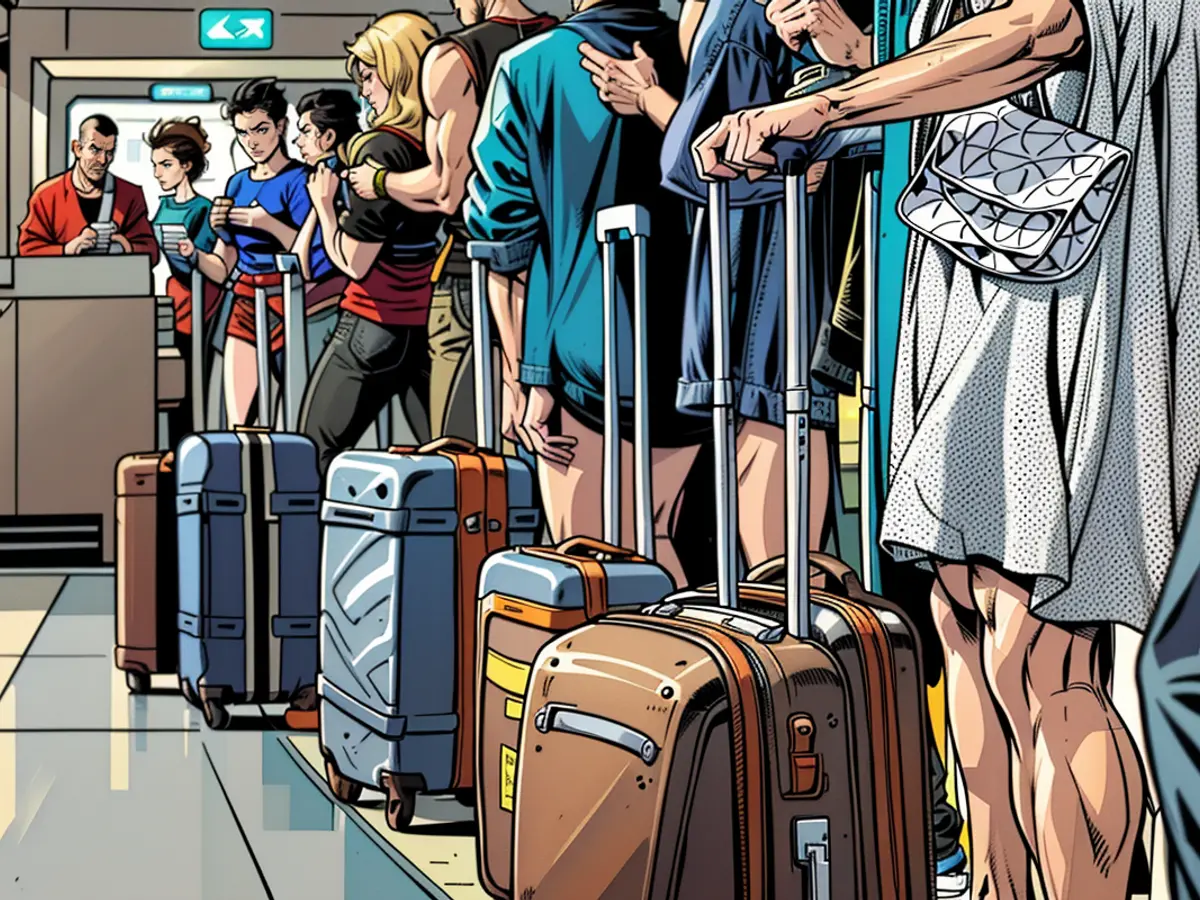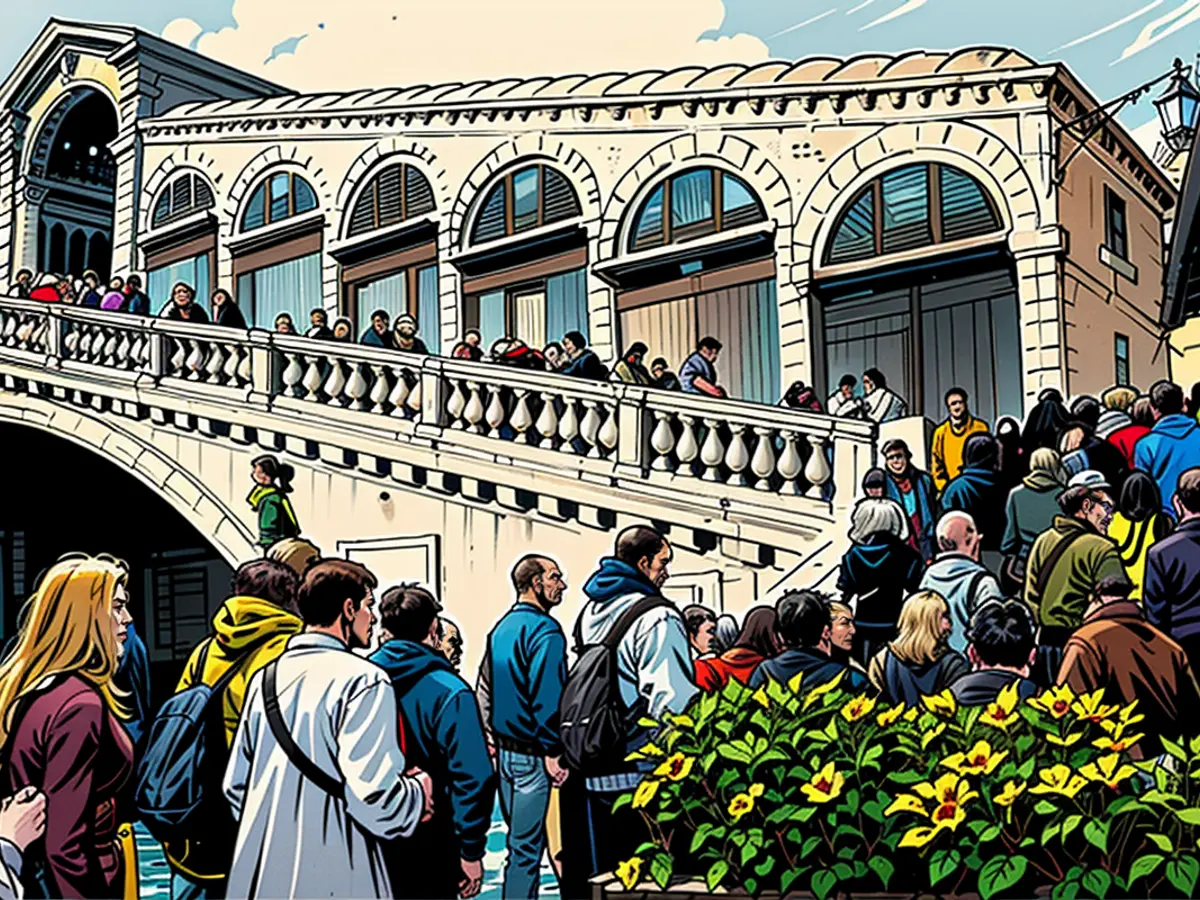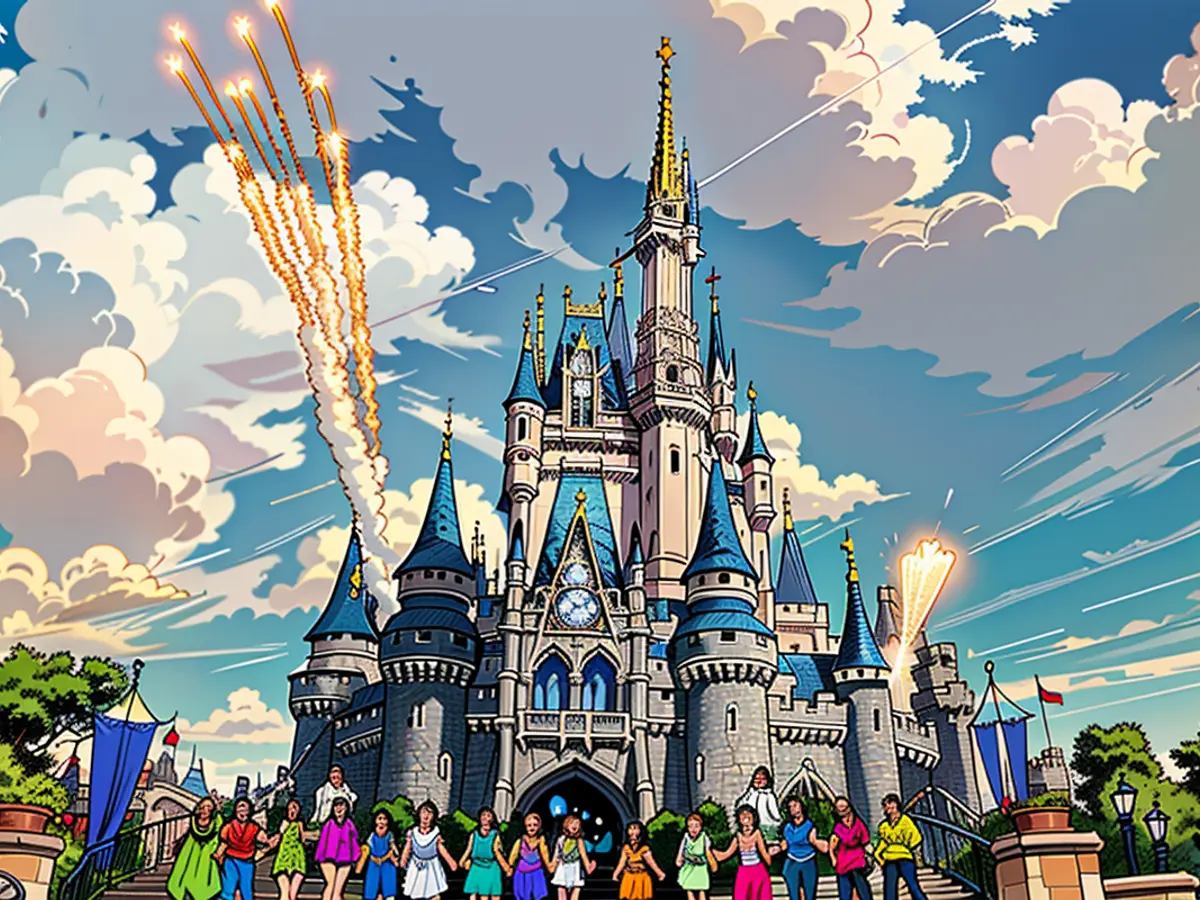The tourism message in Maui that ‘has managed to stick around’
Ua Aloha Maji, a lifelong Lahaina resident, was at his house in Lahainaluna, about a mile inland of the town center when the fire began.
From his perch on the hillside, he watched in disbelief as the flames set off small explosions and devoured houses and cars, taking with them many of his friends, community members and childhood memories.
“I grew up in Lahaina; I’ve been here my whole life,” Maji said. “I was trying to hold it all together.”
Maji did what he could to help those around him. With the power out, he went house-to-house with a generator, cycling to neighbors’ refrigerators to keep their food fresh as well as to charge phones and power medical devices.
But there was nothing he could do to save Lahaina. The fast-moving fire took the lives of at least 100 people and destroyed more than 2,200 structures, including homes, apartments and historical buildings.
In a relative blink of an eye, Lahaina, one of the most historic towns in Hawai‘i, was gone.
What followed were days, weeks and months of community organization and support. In the past year, hotels in West Maui have housed more than 7,000 displaced residents. Grassroots organizations – official and unofficial – have done countless hours of selfless work.
Maji said there were three community hubs in his neighborhood alone.
“Everyone really stepped up and helped each other on a level we haven’t seen before,” Maji said. “This was an elevated sharing of kōkua,” the Hawaiian concept of “help” or selfless giving.
Yet a year later, long-term stability for Maui remains elusive. Despite challenging times and some complicated feelings, the island is urging visitors to come back and be a part of the recovery as residents and businesses continue to struggle economically.
“The immediate task before us is clear: Let visitors know that it’s a great time to return and rediscover the island of Maui,” said Ilihia Gionson, public affairs officer for the Hawai‘i Tourism Authority.
Challenging times: Can tourism help?

In the immediate aftermath of the fire, tourism to the entire island wassuspended for about two weeks so that resources could be dedicated to the recovery effort. West Maui remained closed to visitors until November.
At that time, tourists were asked to return to the island, but it was a soft sell, because thousands of displaced residents were still living in hotel rooms.
In recent months, the Hawaiʻi Tourism Authority (HTA) has begun to restress the importance of welcoming and encouraging visitors as part of the larger recovery effort.
“Our aim is to ensure that residents have the jobs and financial opportunities to heal and thrive,” said Mufi Hannemann, HTA Board Chair. “Job and financial security are directly tied to housing and food security, which are vital to physical and psychological recovery. It’s our sincere hope to restore a sense of security and normalcy to Maui residents after they’ve faced such extreme loss and uncertainty.”
The impacts of the economic downturn were highlighted last month in a study conducted by the Hawaiʻi State Rural Health Association. It found that a significant number of Maui County residents are suffering from mental health issues and financial strain. Many are thinking about leaving the island because of the poor economic conditions after the fire.
Maji said he knows many people who fit this description. Economically, he said he saw his cost-of-living expenses go up by $1,500 a month in the wake of the fire, with his bills now totaling $4,000 a month.
“And that’s on the low end of what people are paying [in housing costs and bills],” Maji said.
In March, the HTA launched a recovery campaign called “Mākaukau Maui,” which means “Maui is Ready.” The idea was to help revitalize Maui’s economy, get people back to work and signal to potential visitors that they are welcome.
But so far, visitors haven’t got the message in the numbers the island needs, and the economy remains behind.
In the first half of 2024, Maui saw a 23.8% decrease in visitor arrivals from the same period last year, and a 24% drop in visitor spending. The average number of daily visitors on Maui was down 22% in June 2024 when compared with June 2023.
Don Prestage, president of Sail Maui, said that two of his boats were moored off Lahaina Harbor the day of the fire but were far enough offshore to avoid damage. Still, the fires and subsequent downturn in tourism has had a significant effect on the company, including a full halt of business in the weeks after the fire and then the logistics of moving their operations from Lahaina to Ma‘alaea, which took several months to arrange permitting.
He said the worst part has been watching some of his employees leave Maui because of the economic downturn.
“That’s been one of the harder things to see,” Prestage said. “People that haven’t been able to stay in the community – people left [Maui] because they couldn’t work.”
Complicated feelings

The recovery of tourism was slow and difficult in the beginning because of the immensity of the devastation. Now, the recovery is still slow and difficult, and there’s no singular explanation for why.
But one reason might be that complicated feelings about the appropriate time to engage in carefree leisure activities as the local population struggles to rebuild are getting passed on to potential visitors.
Prestage said many of his customers at Sail Maui over the past year have expressed that they were hesitant to visit Maui because they weren’t sure whehter it was appropriate to come and have fun, especially in the early days when thousands of residents still lived in hotels.
Protests back in the fall also undoubtedly shaped public opinion, although those protests were more about the housing crisis than being anti-tourist.
“People I talk to say, ‘We were nervous to come and afraid we weren’t welcome or wanted,’ ” Prestage said.
Maui residents have had the tough task of balancing the local recovery effort and ongoing housing crisis with the economic recovery effort for the island as a whole. Prestage said that business owners “are in the awkward position of having to move on more quickly” than most.
“We need to be respectful for so much devastation and loss,” Prestage said. “But on the other hand, people need to work, and there are people supporting other family members on the island.”
He said people should remember that most visitors are respectful and come because they truly love Maui.
Ben Shank, general manager of the Four Seasons Resort in Wailea, said that Maui’s initial message asking tourists not to come immediately after the fire was appropriate but “has managed to stick around,” hurting the economy and continuing the residual impact of the fire.
Making sure visitors know they are welcome back to the island is crucial to improving the economic situation, which is “key to how the island thrives,” he said.
“Obviously, there are people who have been dramatically affected, but there’s also a huge population of folks who help take care of one another,” Shank said. “By supporting the island and having people come and enjoy it, that fuels the entire island.”
How to visit Maui

Maji is ready to welcome back visitors.
As a cultural practitioner for the local nonprofit Kipuka Olowalu and a gigging local musician, he enjoys sharing his homeland with visitors and believes they should be welcomed in the “old Hawaiian way.”
“In Lahaina, our elders were always graceful,” he said. “They had empathy and love for perfect strangers, and they never judged them.”
When visiting, Maji advises against staying at an Airbnb or vacation rental at this time because of the ongoing housing crisis. (Many vacation rentals have been converted to long-term housing for displaced residents, with more changes possibly on the way).
Instead, he recommends staying at one of the many beautiful Maui hotels that employ locals, and to seek out small shops and restaurants.
“Don’t just stay at an Airbnb and shop for groceries at Walmart,” he said. “Come out and see us.”
When visiting establishments and meeting local people, Maji said not to pry about the fire.
“If someone wants to talk, they will,” he said. “A lot of people are really traumatized, so don’t ask, and don’t stick your finger in the wound. Don’t demand to know what a person’s experience was.”
When choosing activities, Ashley Roussel, sales manager at Sail Maui, said visitors should seek out local companies who are promoting Hawaiian values in their programming, prioritizing environmental awareness, using local catering and instilling a “sense of place” in their employees and clientele.
Visitors should not be afraid to vet companies before giving them their money.
“I think there’s an opportunity for visitors to be selective about the way they participate with providers here,” Roussel said. “Choose vendors that show an extra layer of mindfulness of the cultural environment.”
If you want to take things a step further and take direct action in the local communities, the HTA has ongoing volunteer programs that can also earn you discounts on your stay. Many hotels also offer such packages. Be sure to inquire when booking.
For love of Lahaina

Along with residential homes, most of the historic district of Lahaina, including Front Street, was destroyed by the August 8th wildfire.
The rebuild and future of this area is still being discussed. Some have proposed rebuilding as it was; others have suggested a complete change to protect it from rising sea levels and to restore some of its original, native landscape and Hawaiian cultural sites.
Rebuilding the historic district could be done in a variety of ways because of the many lives Lahaina has lived.
Originally called Lele and known for its abundance of breadfruit (ulu) trees, the area didn’t begin going by Lahaina until the 17th or 18th century.
The name Lahaina translates to “cruel sun.” In the Hawaiian language, place names are used to describe the conditions and personality of an area, so one could know what to expect before arriving.
Lahaina served as the royal capital of Hawai‘i from 1802 to 1845 before it was moved to Honolulu on O‘ahu.
During this time, Lahaina was also a busy port, providing a place of refuge for international ships exploring the world’s largest ocean. It was also the epicenter for the Pacific whaling industry.
In 1820, the missionaries arrived and took up a presence in Lahaina. The Baldwin Home, built in 1834 and referred to as the “missionary compound,” was Maui’s oldest home before it burned down in the wildfire.
In the mid-19th century, Lahaina became a plantation town during the sugarcane era. The Pioneer Mill Co. smokestack, established in 1860, was one of the few historic landmarks to survive the fire.
More recently, Lahaina became a hub of activity and tourism, with restaurants, shops and tour operators.
Almost everything in this area has been destroyed. But one thing that still remains is Lahaina’s famous banyan tree, which was planted in 1873. It was badly damaged in the fire but has shown signs of life in the past year.
The spelling of the place name Lahaina was the subject of a recent public discussion. Previously, you may have seen it spelled Lāhainā, but language experts now say that Lahaina is the proper way of spelling it, according to historical records.
Lahaina is beloved by many who have visited Maui, but most of all by its local population. Maji said he sends his gratitude to all who have helped his community in the past year.
“Every single person that helped, I thank them personally and am grateful for them,” he said.
In the aftermath of the fire, a study conducted by the Hawaiʻi State Rural Health Association highlighted the impacts of the economic downturn on Maui County residents, with many considering leaving the island due to financial strain and mental health issues. (contains: 'news', 'Maui')
As Maui struggles economically, the Hawai‘i Tourism Authority continues to advocate for visitors to return to the island, believing that their presence can help restore job and financial security to residents. (contains: 'tourism', 'Maui')
Read also:
- Fear of escalation in the Middle East: US Secretary of State Blinken travels to the region again
- Government circles: US Secretary of State Blinken to travel to Middle East again
- Bridging days 2024: How you can double your vacation this year
- Germany has wanderlust: how tour operators and airlines are looking ahead to the next travel year








